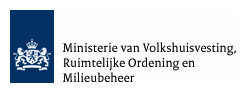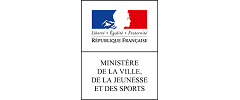New Study: Microplastics from Washing Machine Wastewater Are Polluting Beaches
Tiny plastic particles from laundry wastewater are being washed into the marine environment, according to recent research.
13.02.2012 |Environmental Science & Technology
Contamination of the environment by plastic waste is a growing, worldwide problem. Apart from more visible, larger pieces of plastic, habitats are being polluted by plastic fragments less than 1mm in size, known as ‘microplastics’. The accumulation of microplastics in marine environments has raised health and safety concerns. They can contain potentially harmful ingredients that go into the bodies of marine creatures and could be transferred to people who consume fish.
Sewage wastewater has been shown to contain microplastic particles or fibres. For this study, the researchers analysed samples of sediment from beaches across six continents for microplastic particles. They also looked at sediment taken from representative marine sewage-sludge disposal sites in the UK, effluent (wastewater) from two sewage treatment plants and wastewater from domestic washing machines.
All 18 beaches were contaminated with microplastics. The number of microplastic fibres in 250 millilitres of sediment varied from two in Australia, to 31 in Portugal and the UK. The different types of microplastic fibres were identified as: polyester (which accounted for 56% of the fibres), acrylic (23% of fibres), polypropylene (7% of fibres), polyethylene (6%) and polyamide (3% of fibres).
Beaches located close to densely populated areas were contaminated with more microplastic than those further away from human populations. Beaches near sewage disposal sites had 250% more microplastic fibres - mostly polyester (78%) and acrylic (22%) - than beaches further from disposal sites, even though sewage had not been discharged at the disposal sites for over a decade.
When the effluent of sewage treatment plants was analysed, researchers found an average of one fragment of microplastic per litre of wastewater. The different types of plastics were identified as polyester (67%), acrylic (17%) and polyamide (16%).
The similar types and proportions of microplastic fibres found in sewage-treated wastewater and in sediment taken from the sewage disposal sites suggest beaches at disposal sites had been contaminated by the discharged effluent. In addition, the source of the microplastic fibres in the sewage treatment plants is most likely to be from washing machine wastewater as the mixture of fibres found in synthetic textiles is similar to the mixture of microplastic fibres found in beaches at disposal sites and in the wastewater of sewage treatment plants.
Wastewater, collected after washing (without detergent) synthetic blankets, fleeces or shirts in a washing machine, contained more than 100 fibres per litre of water. Fleeces released 180% more fibres than blankets or shirts. On average, more than 1900 fibres of microplastic can be discarded by a synthetic item during one wash.
Given the global extent of the problem, increasing urbanisation of coastal areas, and the lack of knowledge about the impact of microplastics on animals in the food chain, designers of clothing and washing machines should consider the need to reduce the release of fibres into wastewater. In addition, methods to remove microplastic from sewage, such as ultrafiltration, should be considered and work is needed to determine whether microplastics can transfer from the environment and accumulate in food-webs.
Source: Browne, M.A., Crump, P., Niven, S.J. et al. (2011) Accumulation of Microplastic on Shorelines Worldwide: Sources and Sinks. Environmental Science & Technology. 45: 9175-9179
Learn about WECF activities in the fields of Chemicals & Health and Water & Sanitation.
DONATE to WECF to support our campaigns.
Related News
Getting to the Future We Want
4-7 November, Brussels: European Environmental Bureau’s (EEB) Annual Conference
12.11.2018
Human Biomonitoring for Europe
Vienna, 26 September: stakeholder forum
28.09.2018
A life without plastic, wouldn't it be fantastic?!
Interview with Charlotte Schueler of @PlastikfreiLeben, who lives a zerowaste life in Munich, Germany and shares her experiences to her 25.2 thousand followers on instagram & 37.2 thousand followers on facebook
14.09.2018
Calling for periods free from plastic & hazardous chemicals
Letter to Frédérique Ries, MEP, European Parliament on behalf of the #BreakFreeFromPlastics movement
04.09.2018







































